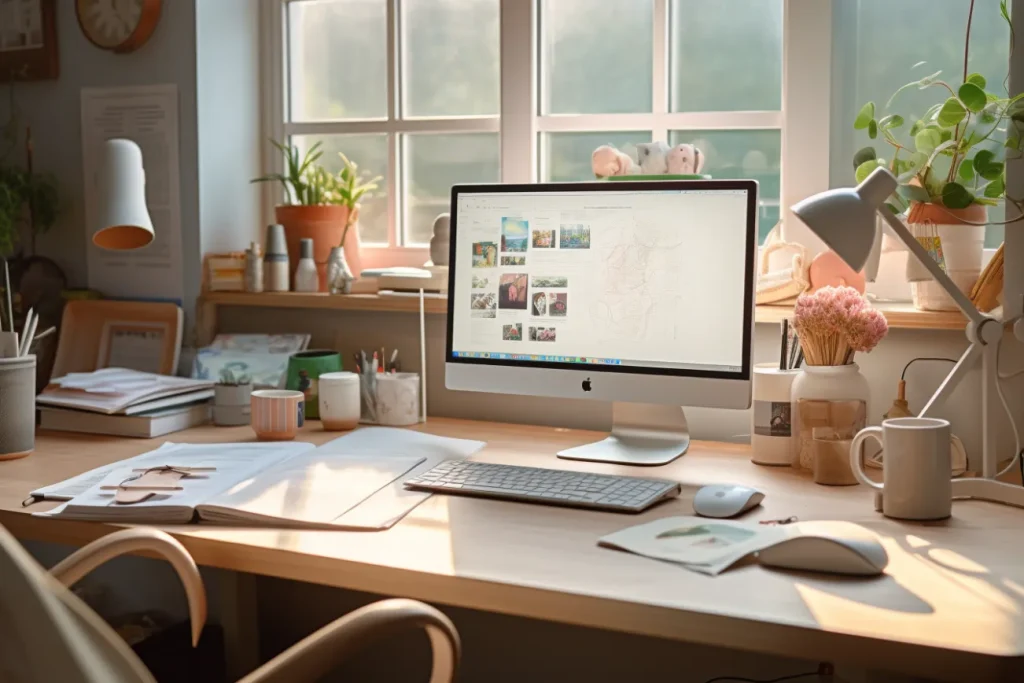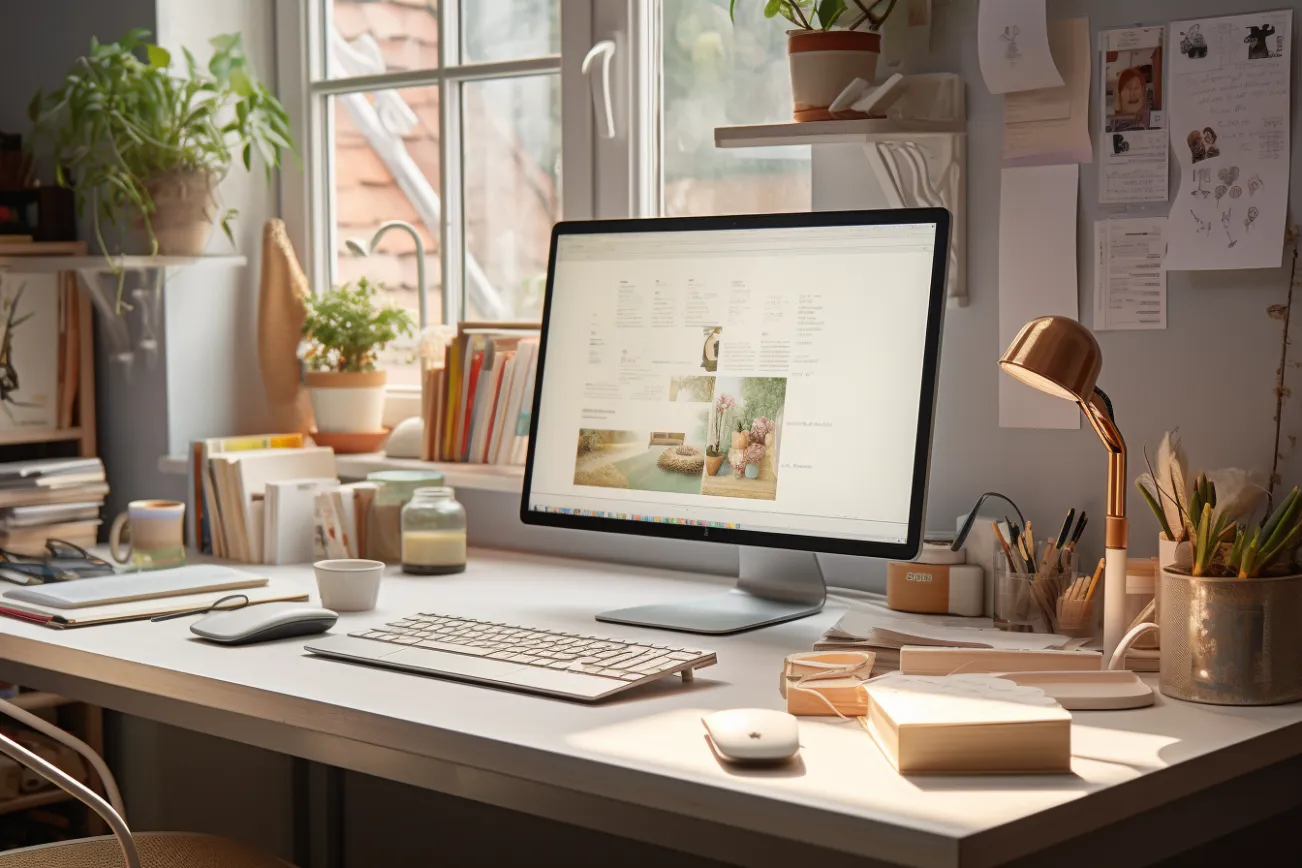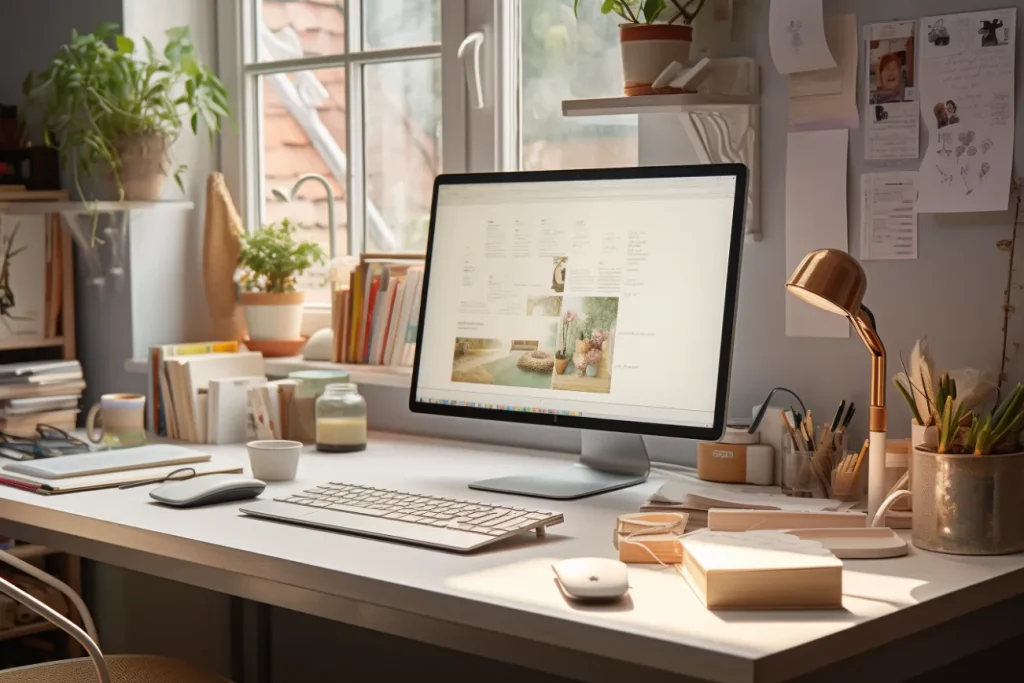The Right Way to Use Images: Legal Insights for Writers
Navigating the world of images and media can be a legal minefield for writers. In fact, copyright infringement cases have been known to cost bloggers and authors hefty sums in damages.
This blog post will arm you with essential knowledge about copyright, fair use, public domain, and creative commons licenses so you can find your way safely through the law while enhancing your work with visuals.
Ready to learn more? Let’s dive in!
Key Takeaways
- Fair use allows limited use of copyrighted materials without permission, but it’s important to consider factors like purpose, amount used, and potential market impact.
- Seek permission for using images or media unless they fall under fair use exceptions to avoid copyright infringement and legal issues. Acknowledging sources is not enough.
- Identify the rights holder before using an image or media piece to avoid copyright violations and protect your own intellectual property.
- Use public domain images from government websites, libraries/archives, Creative Commons Zero sites, Wikimedia Commons, or stock photo sites with a public domain section.
- When using creative commons-licensed content:
- Understand the different licenses and their permissions/restrictions
- Use reputable sources that curate creative commons content
- Follow license requirements and any additional restrictions set by the creator
- Properly use images in blog posts by determining legal rights, obtaining permission if necessary, providing attribution/credit, avoiding alterations that infringe on copyright,
- Guidelines for using images of real people include obtaining consent in writing or blurring faces/obscuring identifying features without consent. Provide proper attribution when possible.
- Protect intellectual property by registering for copyright protection and attributing/crediting borrowed material properly to prevent accusations of plagiarism.
Understanding Copyright and Fair Use
Copyright and fair use are important concepts for writers to understand when it comes to using images and media in their work.
What is considered fair use?
In the realm of copyright law, ‘fair use’ is a concept that allows limited use of copyrighted materials without obtaining permission from the rights holders. This kind of use typically applies to situations like commentary, critique, news reporting, teaching or research.
It’s not an outright pass for all types of usage though; there are four factors courts generally consider when evaluating fair use: purpose and character of your use, nature of the copyrighted work, amount used in relation to the whole piece and effect on potential market value for original work.
Understanding these factors can help you navigate through whether your intended utilization falls under fair-use guidelines.
When do you need to seek permission for using images/media?
Understanding the right time to seek permission for images or media is crucial in content creation. All copyrighted materials, including photos, art pieces, video clips or audio files require consent from the rights holder before they are used.
This rule applies unless they fall under ‘fair use’ exceptions – an area of copyright law that allows limited use of protected material without needing to obtain explicit permission.
Avoiding copyright infringement involves more than just acknowledging the source of an image or piece of media. It’s necessary to get approval if you plan on using someone else’s work extensively or benefiting financially from it.
If identified as a culprit in violating these laws, hefty fines and considerable legal issues could arise. So make sure not only to acknowledge sources but also request for permissions when needed.
Importance of identifying the rights holder
Identifying the rights holder of an image or media piece is crucial before using it in your work. This step ensures that you respect copyright laws and avoid potential legal issues.
For instance, using someone’s copyrighted photo without permission can lead to financial penalties or lawsuits for copyright infringement. The rights holder is not always the creator of the work; sometimes the rights may be sold or licensed to another entity such as a stock photo agency, music label, publishing company, etc.
Therefore, conducting due diligence to track down the rights holder shows lawful and ethical use of images and media content which also protects one’s own intellectual property in return.
Obtaining Free Content
To avoid copyright infringement, writers can obtain free content from sources such as libraries and websites that offer public domain images and Creative Commons-licensed content.
Sources for images in the public domain
There are several sources where you can find images in the public domain. These include:
- Government websites: Many government agencies have public domain image repositories that you can access for free.
- Libraries and archives: Some libraries and archives make their collections available online, and these often include images in the public domain.
- Creative Commons Zero (CC0) websites: CC0 is a license that allows creators to dedicate their works to the public domain. There are websites that specifically curate CC0 images.
- Wikimedia Commons: This is a database of freely usable media files, including images, audio, and video, which are released under various licenses or are in the public domain.
- Stock photo websites with a public domain section: Some stock photo websites have a dedicated section for public domain images, where you can find high-quality visuals without any copyright restrictions.
Creative commons-licensed content
Using Creative Commons-Licensed Content
- Understand the different types of licenses: Creative Commons offers several types of licenses, each with its own permissions and restrictions. Some licenses may require you to give credit to the original creator, while others may prohibit commercial use. Make sure you read and understand the specific terms of the license before using the content.
- Use reputable sources: There are websites dedicated to hosting creative commons-licensed content, such as Creative Commons Search or Flickr’s advanced search options. These platforms curate collections of images and other media that have been released under creative commons licenses, making it easier for you to find suitable content.
- Follow the license requirements: Once you’ve found a creative commons-licensed work that meets your needs, be sure to comply with the conditions set out in the license. This may include attributing the original creator by name, providing a link back to their work, or specifying any modifications you made.
- Respect any additional restrictions: In addition to general creative commons licenses, some creators may add additional requirements or restrictions on their works. For example, they may request notification or approval before use or specify how they want their work attributed. Make sure you comply with these additional terms as well.
Legally Using Images in Writing
Learn how to properly use images in your blog posts, including guidelines for using images of real people and protecting your intellectual property.
How to properly use images in blog posts
To properly use images in blog posts, follow these guidelines:
- Determine if you have the legal right to use the image.
- Obtain permission or a license from the rights holder if necessary.
- Ensure proper attribution and credit for the image.
- Comply with any specific terms or conditions set by the rights holder.
- Avoid altering or manipulating the image in a way that may infringe on copyright.
- Use high – quality images that are relevant to your blog post topic.
- Optimize file formats and sizes for faster loading times.
- Consider using images that enhance your written content and engage readers.
- Be aware of any potential privacy or publicity issues when using images of people.
- Regularly check for updates or changes to copyright laws and regulations.
Guidelines for using images of real people
When using images of real people in your writing, it’s important to follow some guidelines to ensure that you do not violate their privacy or publicity rights. First, always obtain permission from the individuals in the image before using it.
This can be done through a signed release form or a written agreement. Second, if you’re unable to get consent, consider blurring faces or obscuring identifying features to protect their privacy.
Finally, provide proper attribution and credit for the image whenever possible to respect the rights of both the subjects and the creators. By following these guidelines, you can ethically use images of real people in your writing without facing legal issues.
Protecting your intellectual property
Protecting your intellectual property is crucial as a writer. Whether it’s your original content, images, or media that you have created or obtained legally, it’s important to take steps to safeguard your work.
Registering for copyright protection is one way to establish legal ownership and prevent others from using your creations without permission. Additionally, properly attributing and crediting the sources of any borrowed material can help avoid accusations of plagiarism and ensure ethical use.
By taking these proactive measures, you can protect your intellectual property and maintain the integrity of your work as a writer.
Tips for Avoiding Legal Issues when Using Images and Media
Learn how to use images of people without violating privacy rights, how to use internet images without permission, and what to do if you don’t receive a response or if conditions are unreasonable.
Don’t miss out on these essential tips for staying legally sound in your writing.

Using images of people without violating privacy and publicity rights
When using images of people in your writing, it’s important to respect their privacy and publicity rights. One way to do this is by obtaining written consent from the individuals featured in the image.
This ensures that they are aware of how their image will be used and gives them the opportunity to approve or deny its usage. Additionally, if you plan on using the image for commercial purposes, such as in an advertisement or promotional material, you may need a signed release form from the person in order to avoid legal issues.
Another option is to use images that are labeled for commercial use with modifications allowed under Creative Commons licenses. These licenses provide guidelines for how you can legally use someone else’s work while still respecting their rights as the creator.
Be sure to check the specific terms of each license before using any images found online.
It’s also worth noting that some public figures have limited privacy rights due to their fame or position in society. However, it’s always best practice to consider whether using an individual’s image could potentially cause harm or violate their rights.
How to use images from the internet without permission
Using images from the internet without permission can lead to legal issues. Here are some tips to help you navigate this potential minefield:
- Conduct a thorough search: Look for images that are labelled as “Public Domain” or “Creative Commons” licensed. These images can generally be used without explicit permission, although it’s important to check the specific usage rights for each image.
- Use stock photo websites: Several websites offer free or paid images that can be used legally. Make sure to read and comply with their terms of use and licensing agreements.
- Create your own visuals: If you have the skills, consider creating your own images, graphics, or illustrations instead of relying on copyrighted material found online.
- Seek permission: When in doubt, reach out to the copyright holder and ask for permission to use their image. Many photographers and artists are willing to grant usage rights if properly approached.
- Understand fair use: Familiarize yourself with fair use guidelines in your country or region. In certain cases, you may be able to use copyrighted images under specific circumstances such as criticism, commentary, or news reporting.
- Modify the image: If you find an image online that you would like to use but can’t obtain permission from the copyright holder, consider making significant modifications so that it becomes a unique piece of work.
- Attribute properly: Always provide proper attribution when using an image obtained from the internet, even if it is not required by law. This shows respect for the original creator and helps avoid misunderstandings.
What to do if you don’t receive a response or if conditions are unreasonable
If you don’t receive a response or if the conditions for using images and media are unreasonable, here are some steps you can take:
- Reach out again: If you haven’t received a response, consider sending a polite follow-up message or email to inquire about the status of your request.
- Look for alternative sources: Search for other images or media that may be suitable for your project. Explore free stock photo websites, public domain resources, or creative commons-licensed content.
- Modify your usage: If the conditions set by the rights holder are too restrictive, try adjusting how you plan to use the media. For example, you could crop or edit an image to focus on a specific element rather than using it in its entirety.
- Seek legal advice: If you’re unsure about your rights or obligations when it comes to using certain images or media, consider consulting with an attorney who specializes in intellectual property law. They can provide guidance based on your specific situation.
- Create your own content: Instead of relying on third-party images and media, consider creating your own original content. This ensures that you have full control over its usage and avoids any potential copyright infringement issues.

Conclusion
In conclusion, understanding the legal aspects of using images and media is crucial for writers. By being aware of copyright laws and fair use guidelines, obtaining free content responsibly, and properly attributing and protecting your own work, you can avoid legal issues while enhancing your writing with visuals.
Stay informed on privacy and publicity rights when using images of people, know how to navigate the internet for image usage, and take appropriate action if permission is not granted or conditions are unreasonable.
With these tips in mind, writers can confidently incorporate images and media into their work without infringing upon others’ rights.

